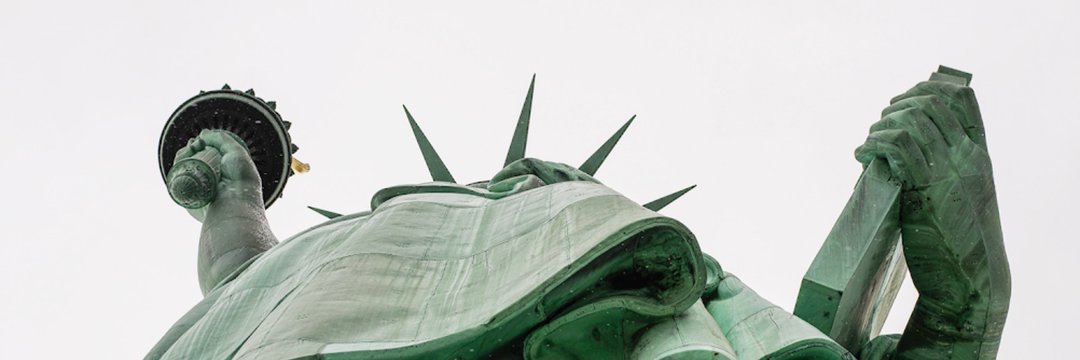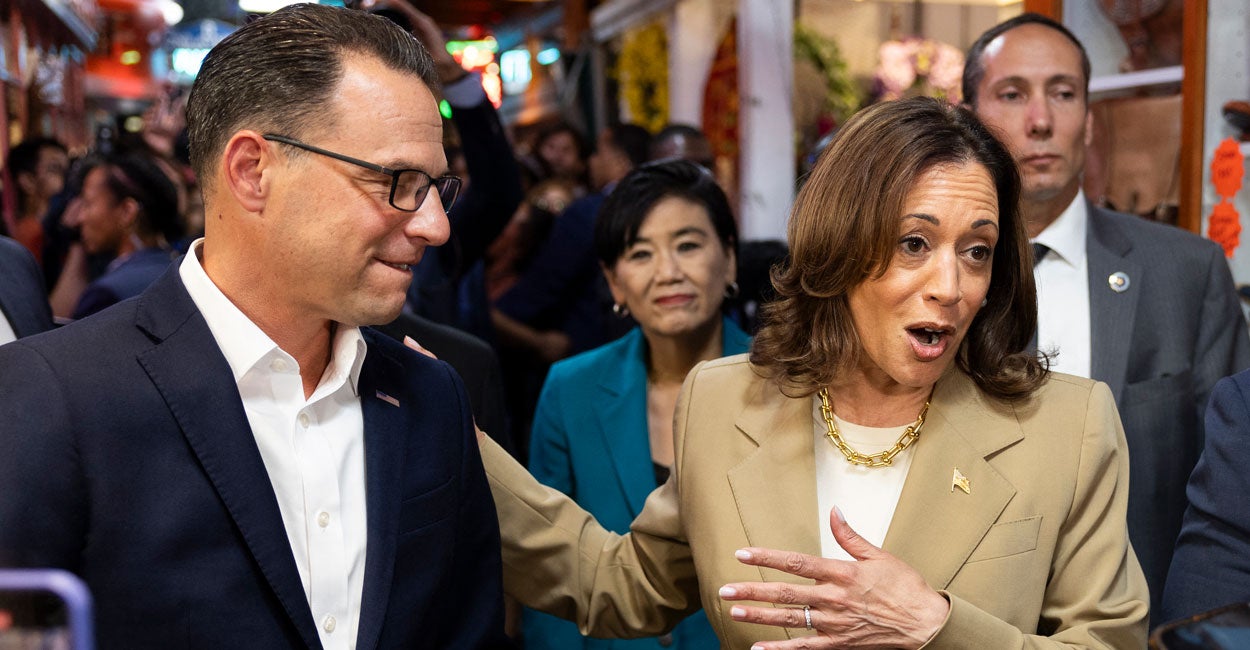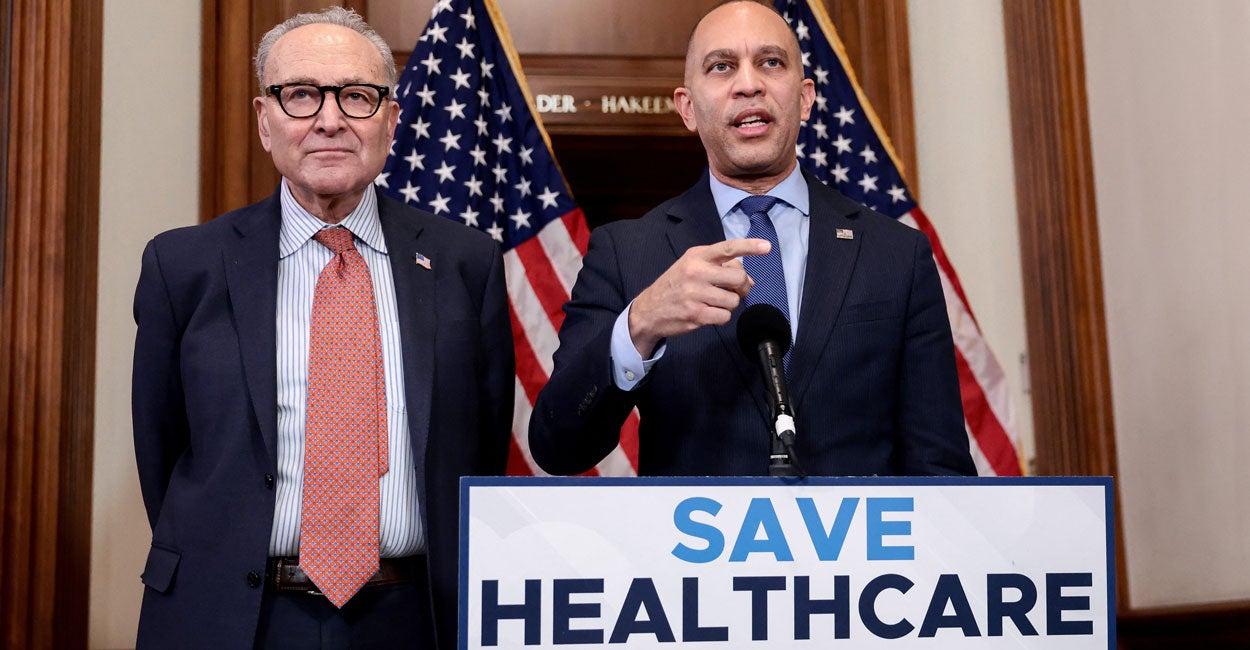
www.dailysignal.com
These Democrat Narratives Are a Lame Excuse for an Agenda
Editor’s note: This is a lightly edited transcript of today’s video from Daily Signal Senior Contributor Victor Davis Hanson. Subscribe to our YouTube channel to see more of his videos.
Hello, this is Victor Davis Hanson, for The Daily Signal. I’d like to talk about Democratic talking points. By that, I mean, these memes, these topics, these themes that they use. But they seem to be divorced from reality.
Take the Epstein files. Remember, Epstein files? Epstein files. Epstein files. Gotta have the Epstein files released. They all said that Trump was hiding things. And rational people said the Democratic administration had the files for four years. Given what they had done to Trump with lawfare, you would’ve thought that if there was anything incriminating, they would’ve released it.
And then, of course, there were rumors that 80% to 90% of the people mentioned in the files were Democrats. And then there was also an investigation, through leaks, that Donald Trump ostracized Jeffrey Epstein—and here’s the key point—before he was convicted of sexual crime. So, there was nothing there. And yet, as soon as Trump comes in, Epstein files, Epstein files. Epstein files. So, he releases them. And what does it show? Exactly what everybody knew and what the Democrats, themselves, knew. Did they say, “We’re sorry, we cooked this all up, there was nothing in the files”? No. They went on right to Obamacare.
Affordable Care Act. Let’s shut down the government. Republicans will not give us all this money. Multi-billion-dollar subsidies. And then people said, “Well, come on, you guys. You publicize it as the new health care plan. Only 25 million Americans are in it. A small fraction. It doesn’t work. You, yourself, said that they needed subsidies. And you were willing to put a time limit on it. And the subsidies ran out. And they weren’t even enough.”It’s just constant, constant, constant. This isn’t the issue. Yes, it is. Affordable Care Act. Affordable Care Act. That’s all that matters. Affordable care—and then the government was shut down, for the longest time in history. Forty days. And now it’s open. Has anybody heard anybody talk about the Affordable Care Act? I haven’t.
And then it was Trump’s health. Trump’s health. Trump’s health. He’s got spots on his arms. He has cankles. He’s limping. He looks bad. He’s losing his mind. Everybody said, “Wait, wait, wait, wait, wait, wait, wait. You people hid the demonstrable cognitive decline of Joe Biden for four years with a very strange White House media conspiracy. Now you’re suggesting that Trump is non compos mentis? But he just took a health exam. An MRI body scan.” No, no, no, no. He’s cognitively declined. So then, he releases it. It shows that he is in perfect health for someone his age. Does anybody talk about Trump’s health? No. No. No.
And then it’s affordability. Affordability. Affordability. That’s what it’s all about. Affordability. Well, wait a minute. During the Biden administration, there was a cumulative inflation of 21%. That averages out to 5.2% per year. Per year. When Donald Trump came in, Jan. 20th, 2025, it had dipped to 3%. But given all the things that Trump has done, it’s still 3%. He has not increased inflation. He has brought in $10 trillion, at least, of foreign investment. There’s going to be enormous stimuli next year, as far as oil and gas production at record levels, the Big Beautiful Bill’s deregulation, tax cuts. And do we hear about affordability? Affordability? Affordability? Not really. I mean, there’s no real issue. The inflation rate is lower, this year, than in any year on average of the Biden administration. And it’s going get better next year.
So, what am I trying to get at? What’s going on? Why do they fixate on these themes, and then they just drive it, drive it, drive it? And the fact is, their acts of commission and omission, they feel that they can create chaos. They can make people angry. They can bomb Tesla dealerships. They can shut down the government. They can stop ICE. They can tell soldiers to disobey orders. But that’s a negative message. What is omitted? That’s the committed message.
But what is omitted? Do they say, “Here’s my alternate plan for immigration. I want one million, two million, three million illegal. I want to go back to the Biden [administration], two million illegal aliens a year”? No, nothing. “Obamacare: Here’s how we’re going to solve it so we don’t need subsidies. A, B, C.” Nothing.
Trump’s health: “We introduce legislation that every president has to have an annual physical, every year. And everything has to be transparent.” If that had been true, Biden would’ve been 25th Amendmented the first year of his term. Do they have a crime initiative? Do they have a foreign policy initiative? Do they have any initiative? No. So, what they try to do is: A, create chaos so we’ll all lay down in the fetal position, say, “Please stop it. I don’t want it.” Or they’re going to talk about affordability, affordability, affordability, without ever mentioning that under their auspices, the DEI, the ESG, The Green New Deal, it was all regulate, regulate, restrict, slow down. And we had 21% inflation. We had low GDP. Do we want to go back to that?
So, they don’t talk about it. So don’t pay any attention to Epstein files, Obamacare, Trump’s MRI, affordability. These are all just excuses for the absence of 51% on the issues. And a lack of a systematic, comprehensive, alternate agenda, that they can present to Donald Trump. That all this is absurd does not mean it doesn’t work. I mean, we have a candidate who, in Virginia, running for attorney general, said that he wanted his opponent dead and his children dead. And he won. He won. We had a candidate for the mayoral race who said he wanted to seize the means of production. And [Zohran] Mamdani won.
We have all these races where crazy things happen. But that doesn’t mean that we have to accept them, as not crazy. They’re crazy. And don’t pay any attention to them because it’s just an excuse for the lack of a serious agenda.
We publish a variety of perspectives. Nothing written here is to be construed as representing the views of The Daily Signal.
The post These Democrat Narratives Are a Lame Excuse for an Agenda appeared first on The Daily Signal.














